Keep scenery looking its best: There are two main issues with aging scenery – dust build-up and fading. Battling dust is an inevitability and an uphill battle if scenery work is continuing elsewhere in the room. Both dust and fading occur gradually over the years and can be hard to spot.
Water and rolling stock will often be the first to show the dust, but eventually even vegetation will start to look dull and unappealing. While this article will look at how to clean up old and tired layouts, it’s worth considering first how to prevent the problems before they arise.
Controlling dust and UV
The benefits of a temperature-controlled room, properly finished with sealed floors, are immeasurable. Not all of us can afford this, but even a coat of paint on a concrete floor can help control dust from that source, while a finished ceiling will prevent dust from above.
I’ve seen all sorts of systems in the railroad press, from positive air pressure pushing dusty air out to filter systems, but they’re beyond most of us. Finishing a room is more achievable.
As an alternative, enclosing the layout can cut down the dust reaching it. Consider adding a top enclosure if no room ceiling is possible. Plastic sheeting or permanent curtains are options to seal the front. Dioramas are easily stored with either plastic sheeting over the top or in a box.
I build all my messy scenery in a different room if I possibly can to cut down on dust. Aerosol cans put out a lot of particulates, so I always try to use these outside. This may not be practical for everyone, but using a vacuum to catch dust as its created will help.
While considering ceilings, it’s also a good time to sort out the layout lighting. The second key issue is fading, which is caused by ultraviolet (UV) light, either from sunlight or some types of bulb, such as fluorescents. Installing curtains or blinds on windows, choosing low-UV-emitting layout lighting, and adding UV shields to fluorescents will go a long way. The same protective curtains used to keep dust off can also keep light out.
Cleaning and touch ups
No matter how diligent you are, dust will settle over time. The best way to address this is regular cleaning, but it can be scary taking a vacuum to your precious scenery. I’ve lost a lot of leaves on my older trees doing this. Nonetheless, a vacuum cleaner and a soft brush are key tools for removing dust. I always use a pair of tights or pantyhose over the end of the vacuum to catch any important parts of scenery that may have come unstuck.
Regular or irregular cleaning can leave bare patches, as will knocks and spills. Touching up with paint or additional scenery may be necessary, and a note of what scenery products have been used or sticking to standard colors will help immensely at this point.
Adding another layer of ground foam is always an option for bare patches or badly faded areas. Faded colors can sometimes be resuscitated with a spray of water or matte varnish, which helps knock down the dust, or with paint the color of the original vegetation. Many of the scenery techniques I describe in my book, Building Realistic Model Railroad Scenery, finish with airbrushing a paint color over scenery like grass or trees. Such a painted finish is less prone to fading and also easy to touch up if needed.
Finally, if all else fails, consider it an opportunity to use all the new techniques you’ve learned since you did the original scenery and replace it. I’m constantly ripping out and upgrading scenery as I learn new techniques. Though it can be painful, it can be beneficial in the long run.
Vacuuming
The first step is to check for any loose details before vacuuming the worst of the dust off. For flat smooth areas, such as my dock water, I use the brush attachment on my vacuum, but for most areas I use a soft paint brush to remove the dust in such a way that the vacuum catches it. To stop any important details being lost, I put a pair of tights over the end of the vacuum nozzle.
Vacuuming vegetation can be problematic and may defoliate areas as well as removing the dust. I do vacuum static grass, as I will have done this in the original modeling.
Quite a lot of detritus will be caught up in the vacuum nozzle. It was surprising how much fluff there was in this.
Water mist
Dust can be settled into the vegetation by a light mist of water. Here I have also wet the surface of poured resin water prior to cleaning it.
This water has a layer of gloss medium, so a paper towel is suitable to clean off any dust. However, unprotected resin may scratch. If the water surface is resin, I would use a softer rag.
Finally, I use cotton swabs to reach around the smaller details or rougher surfaces.
Gloss medium may turn white when it gets wet, depending on the brand, but it will turn clear again as the water dries.
Renewing materials
For areas that have lost their shine, you can add another layer of gloss medium or gloss Mod Podge once it’s clean. Be careful not to seal any dirt in, as it will be impossible to get out afterward. Froth that has lost its whiteness can be touched up with more white paint.
Finally, have a check and reapply any bare patches or missing foliage or use an airbrush to add back any faded colors. Your layout should look brand new again.





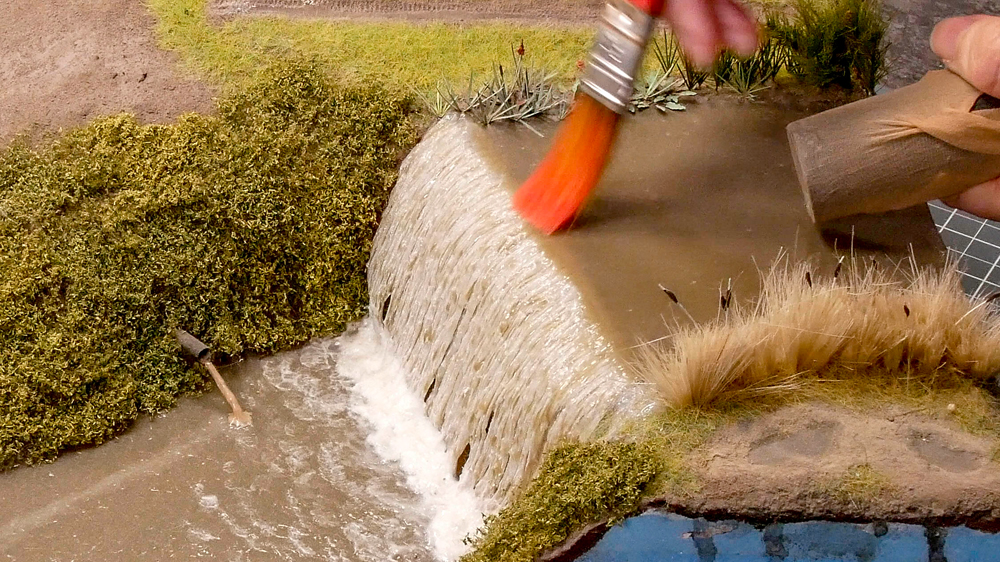
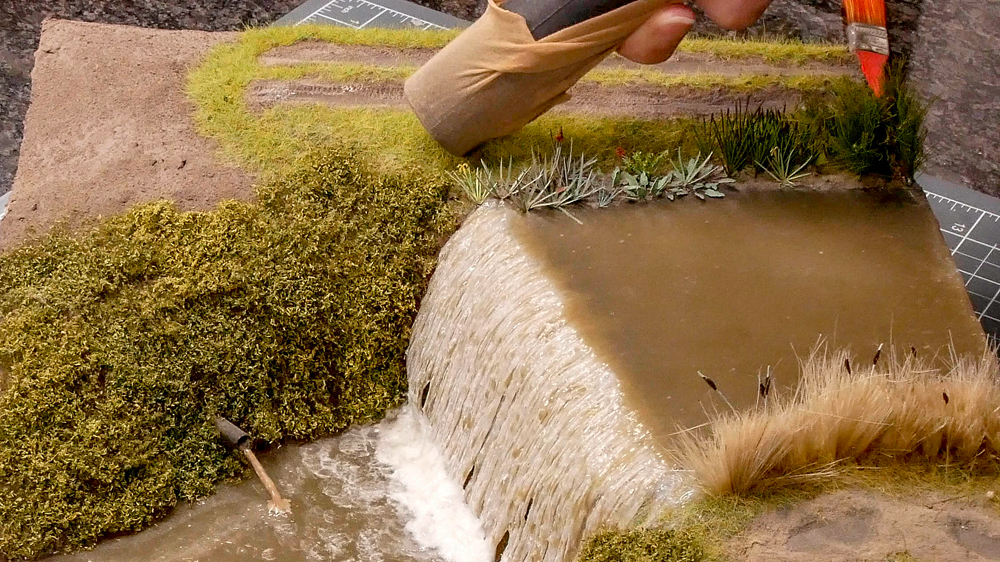
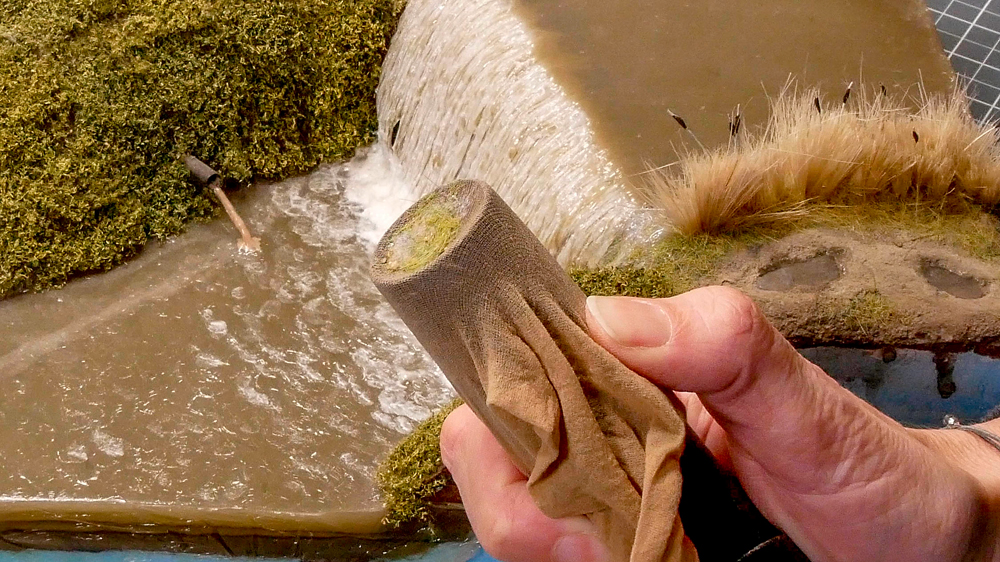
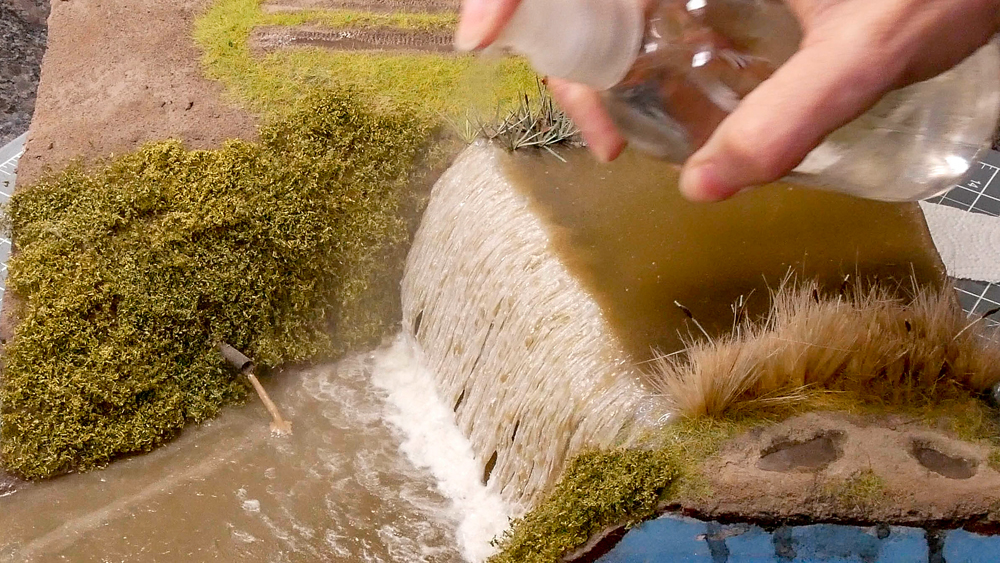
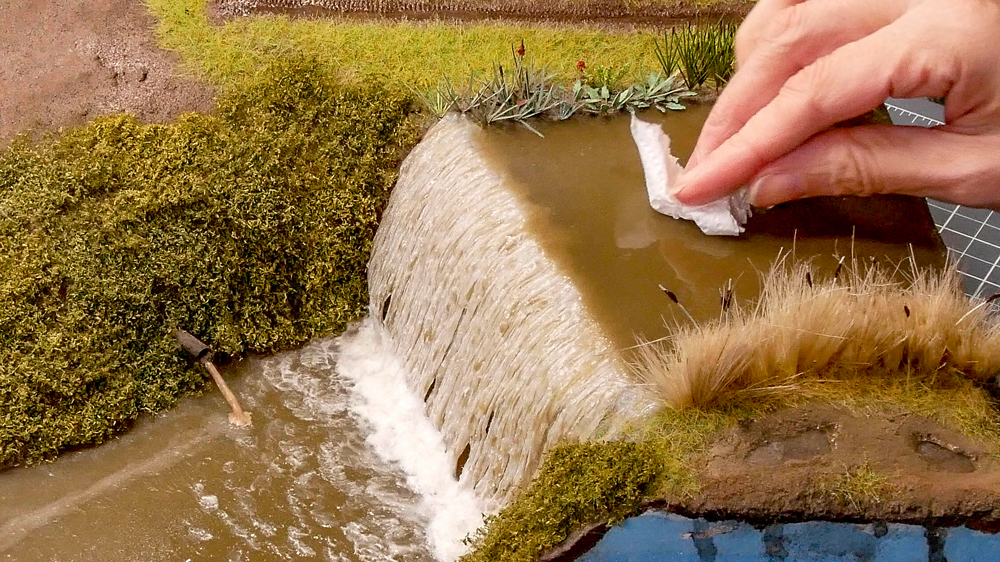
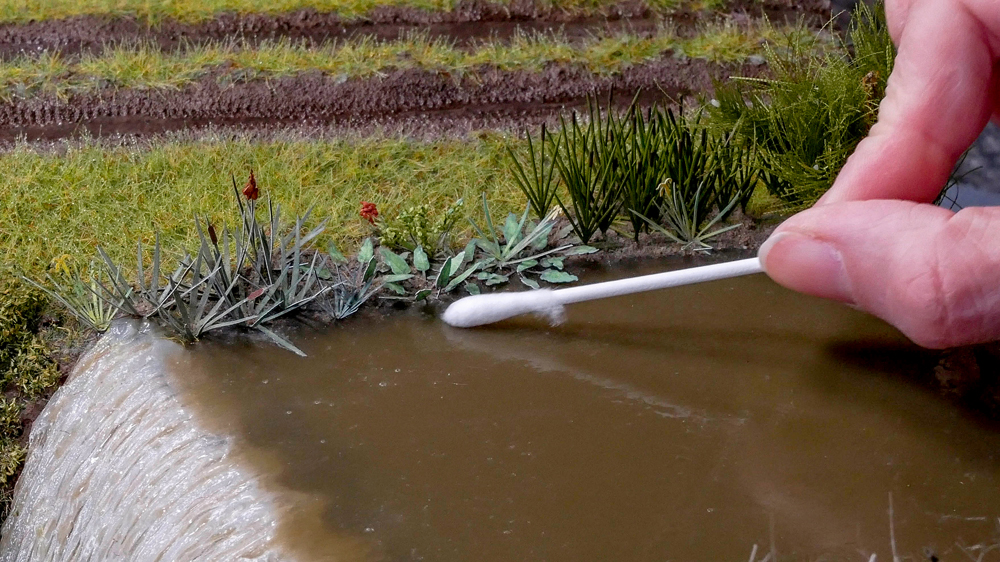
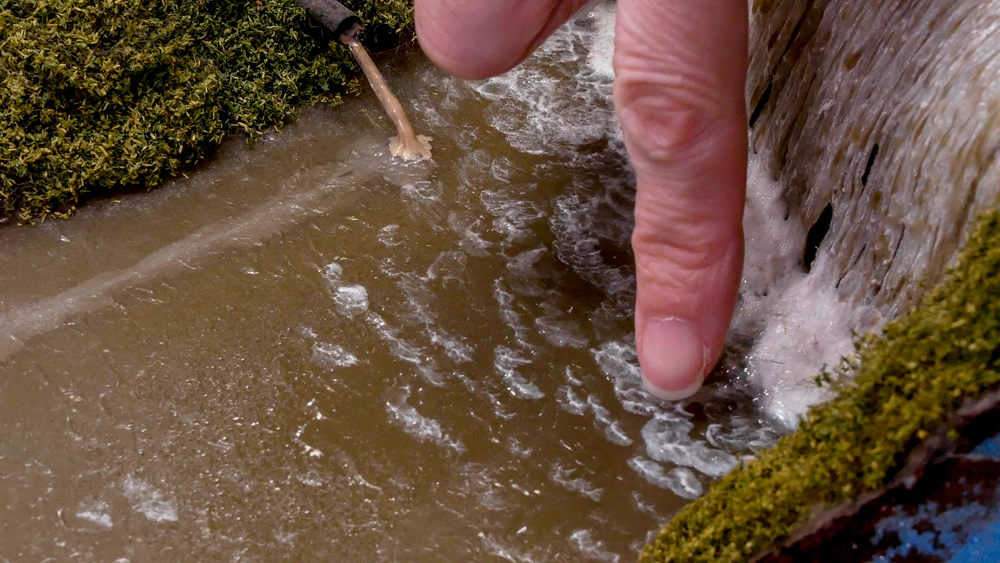
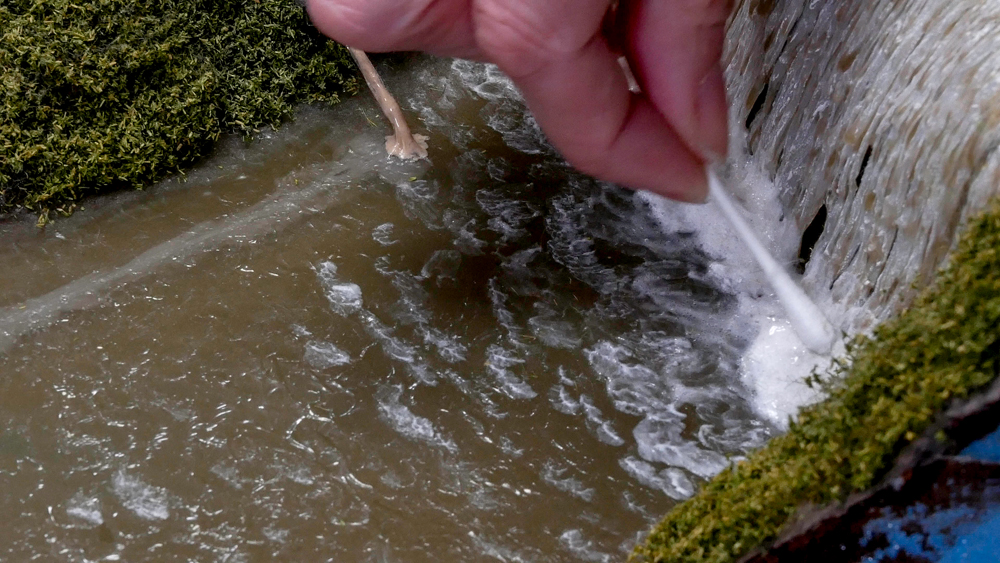
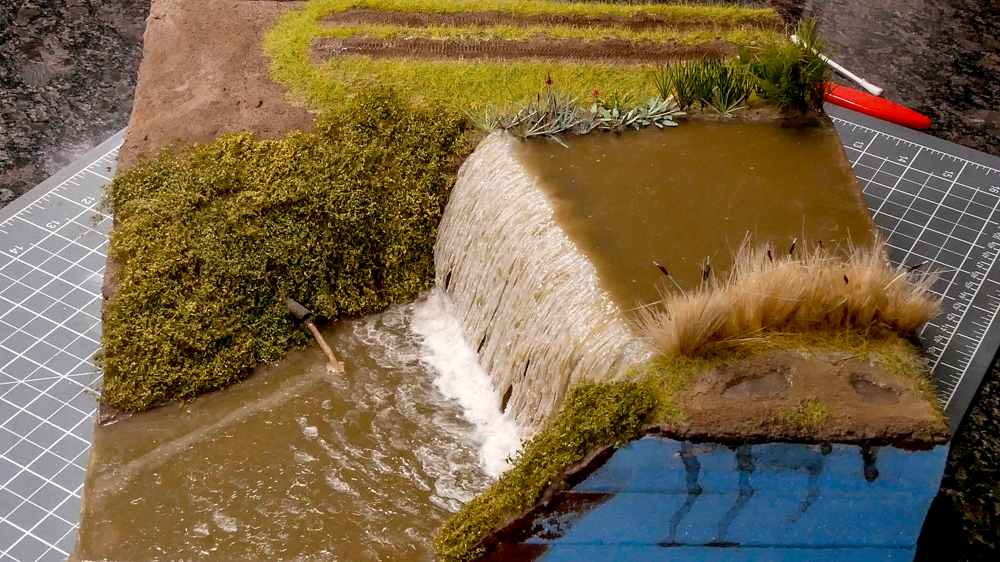


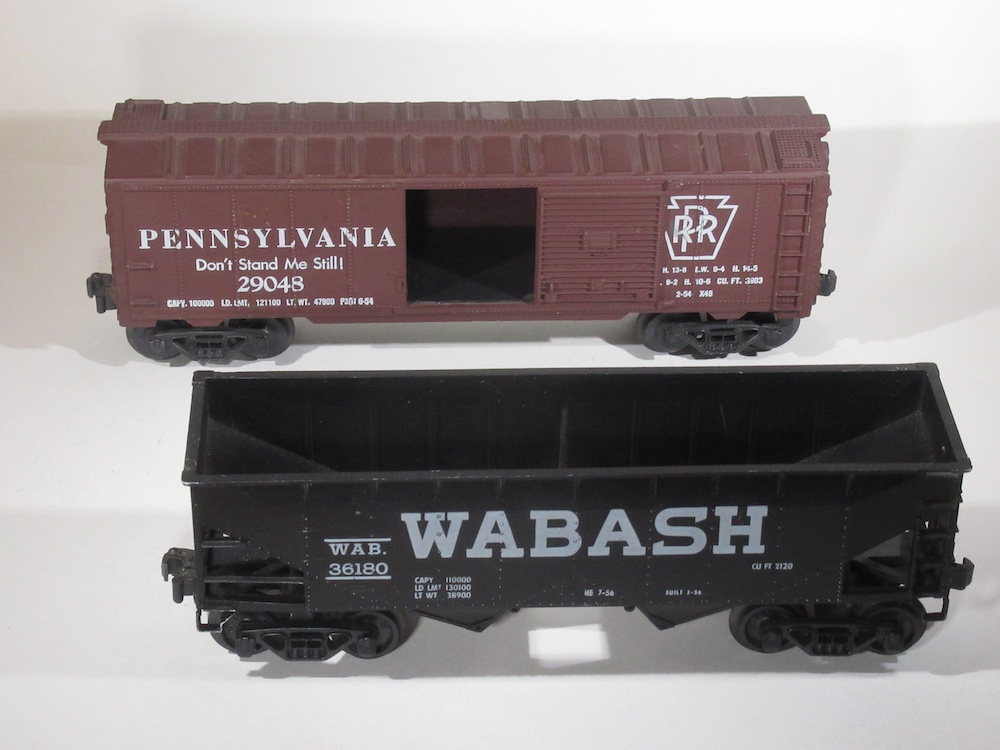
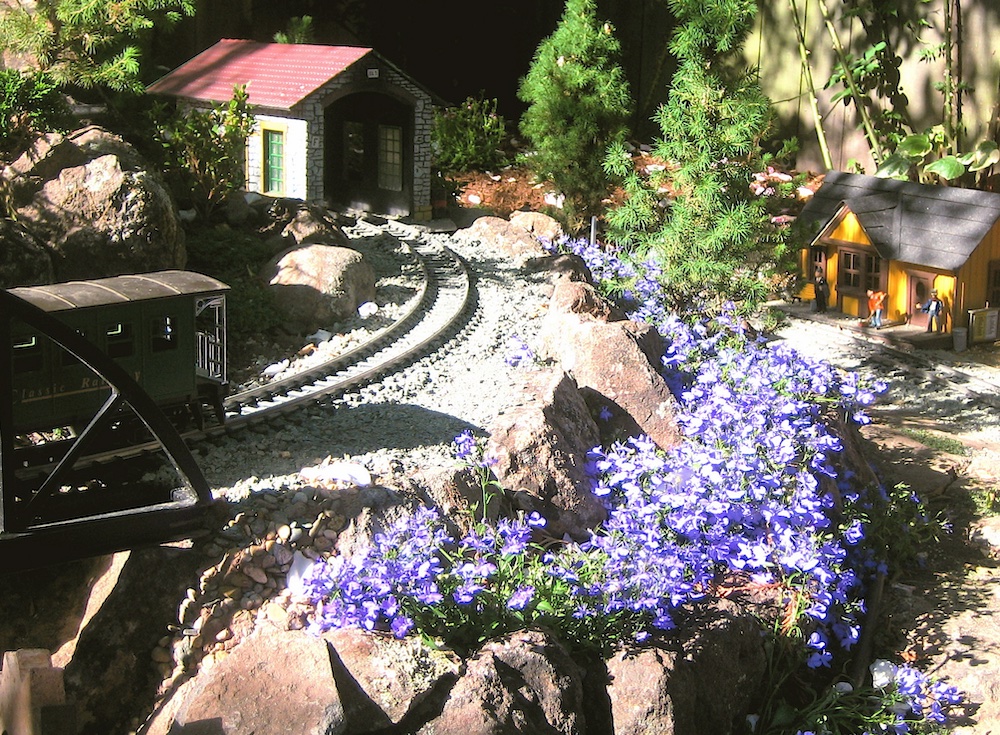





I have heard that spraying a light mist of alcohol over a forest scene can get the dust off these trees.